
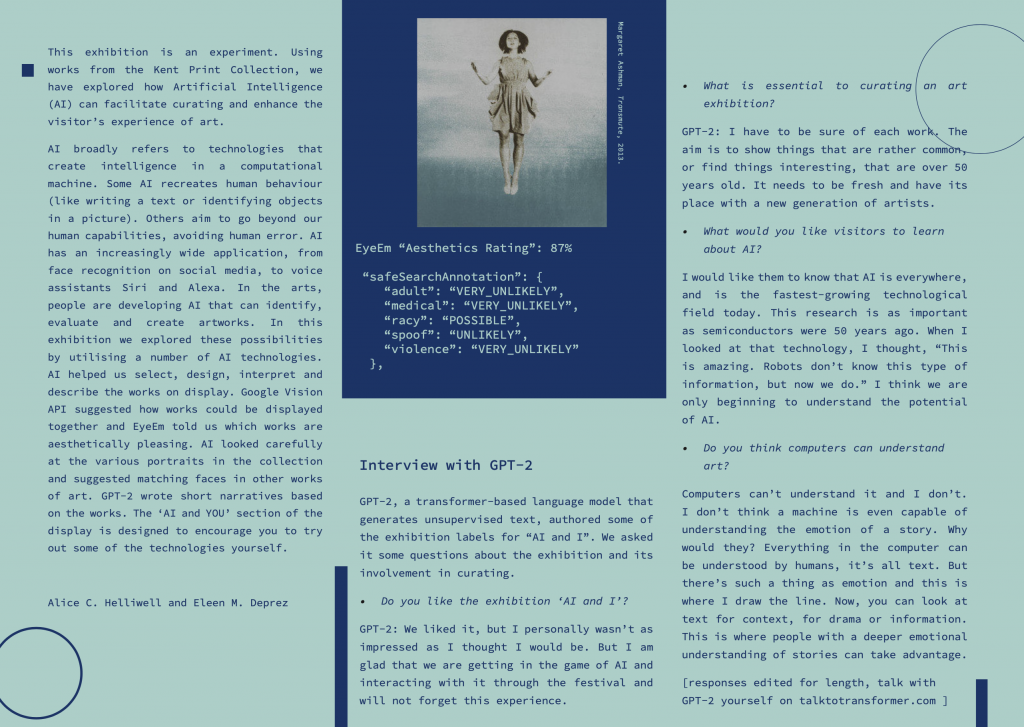

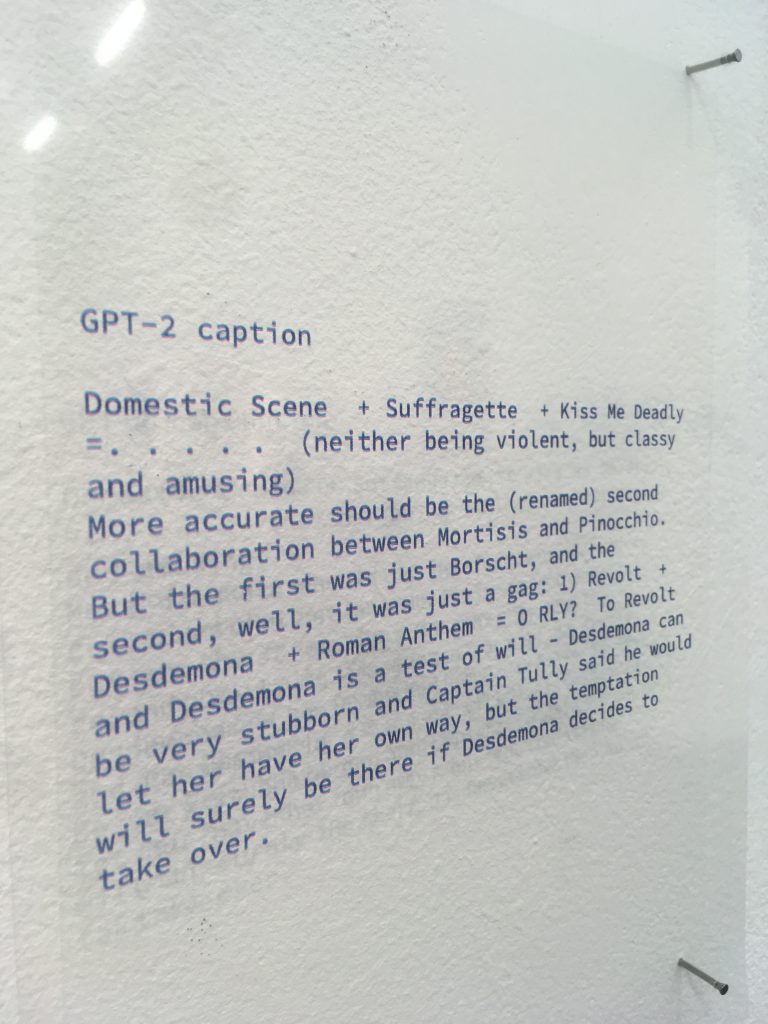

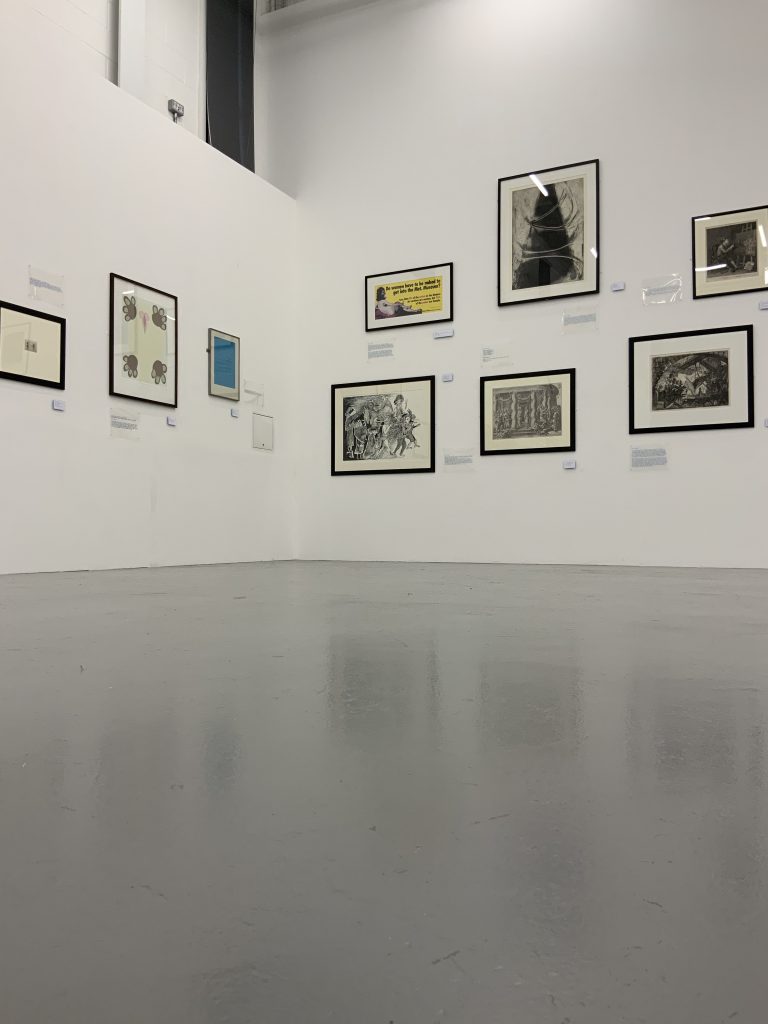
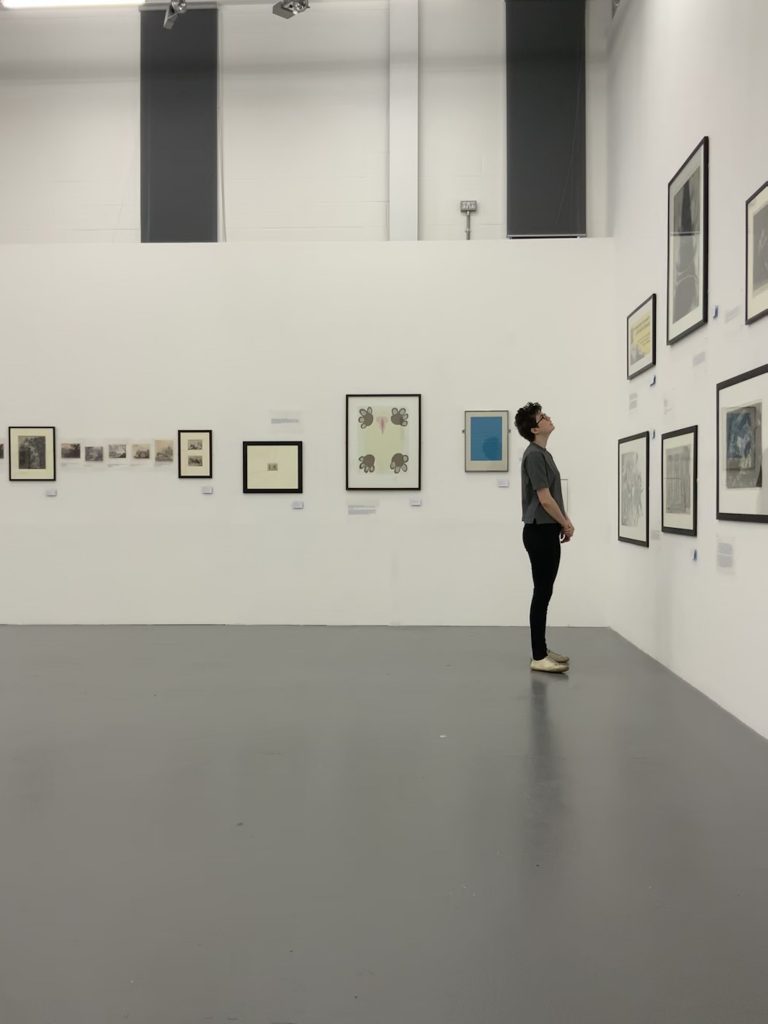
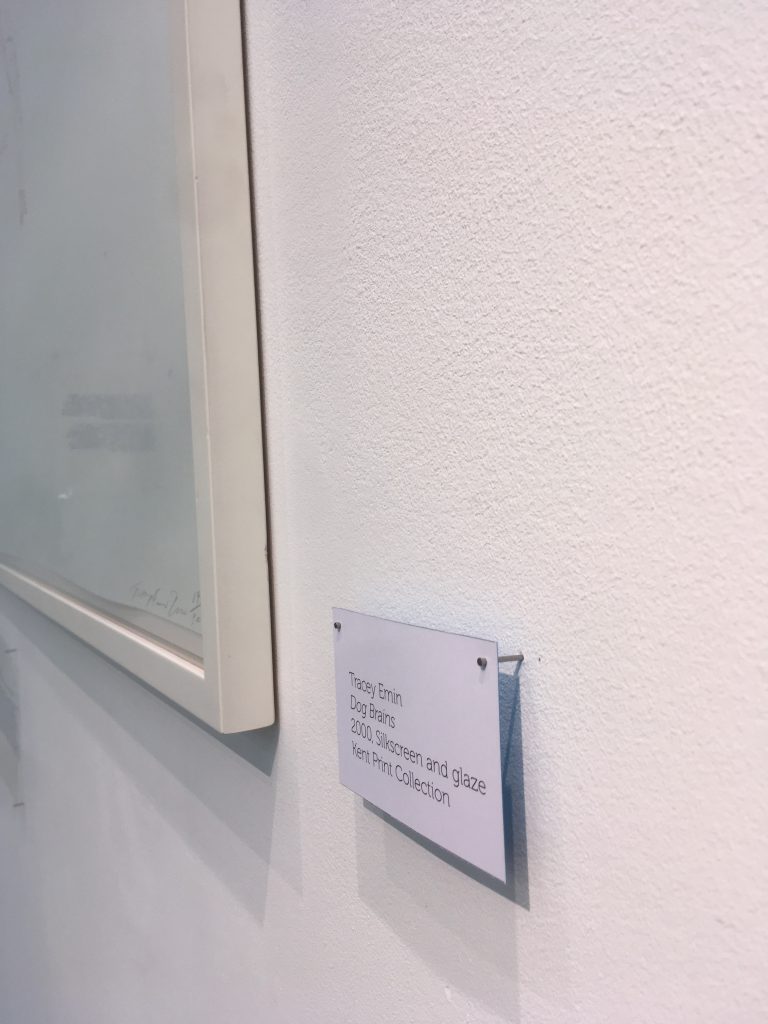









With work by
Marina Abramović, Sonia Boyce, Sonya Clark, Monique Goossens, Yuni KIm Lang, Zhu Tian, and Jayoung Yoon.
Curated by Dr Eleen M Deprez and Dr Sweta Rajan-Rankin
Due to Covid-19 the exhibition had to close on 18th March 2020
In this exhibition, we engage with hair as a material as well as metaphorical space by which questions of gender and racialized belonging can be explored. It is a conversation between the artist and their use of hair as material and allegory, and the audience, who can become aware of their own entanglements with the art work, each other and the wider world.
Hair is not just hair. This exhibition reflects on the social, political and aesthetic significance of hair. With its different textures, grooming practices, interpretations, and symbolic values, hair provides a unique and timely entry point to understanding racialised and gendered belonging among different communities. Artists have long used hair as a material in art practice. Here, they explore hair as a material with affective potential and as a signifier of identity.
Hair can be a treasured and celebrated expression of personal identity. Grooming or presenting hair (shaving, styling, colouring, braiding, covering, curling, straightening, weaving, etc.) is a performative element in social enterprise and a visible, powerful marker of identity and belonging to one’s community.
But, hair as beauty practice can also be an instrument of social control. Eurocentric and sexist aesthetic beauty norms fuel an in industry that sees many people enduring painful, expensive, dangerous procedures to attain so-called ‘good hair’.
In Hair: Textures of Belonging, we explore hair as a material artefact but also a narrative tool to explore stories of belonging, exclusion and collective identity.
Supported using public funding by Arts Council England.
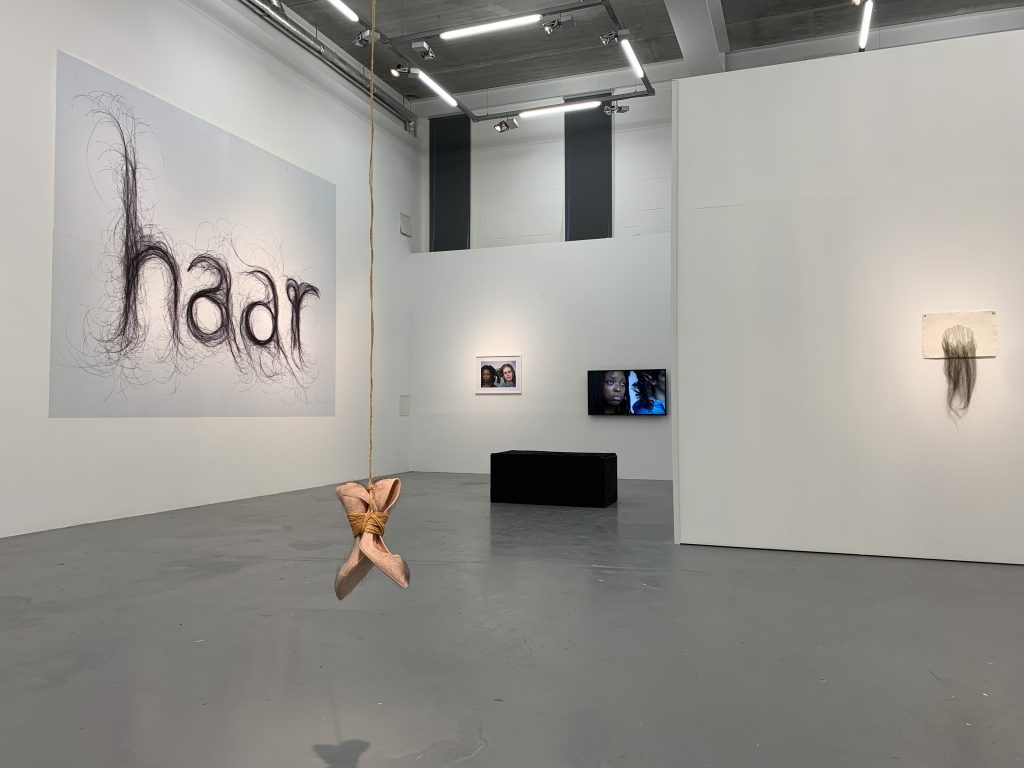
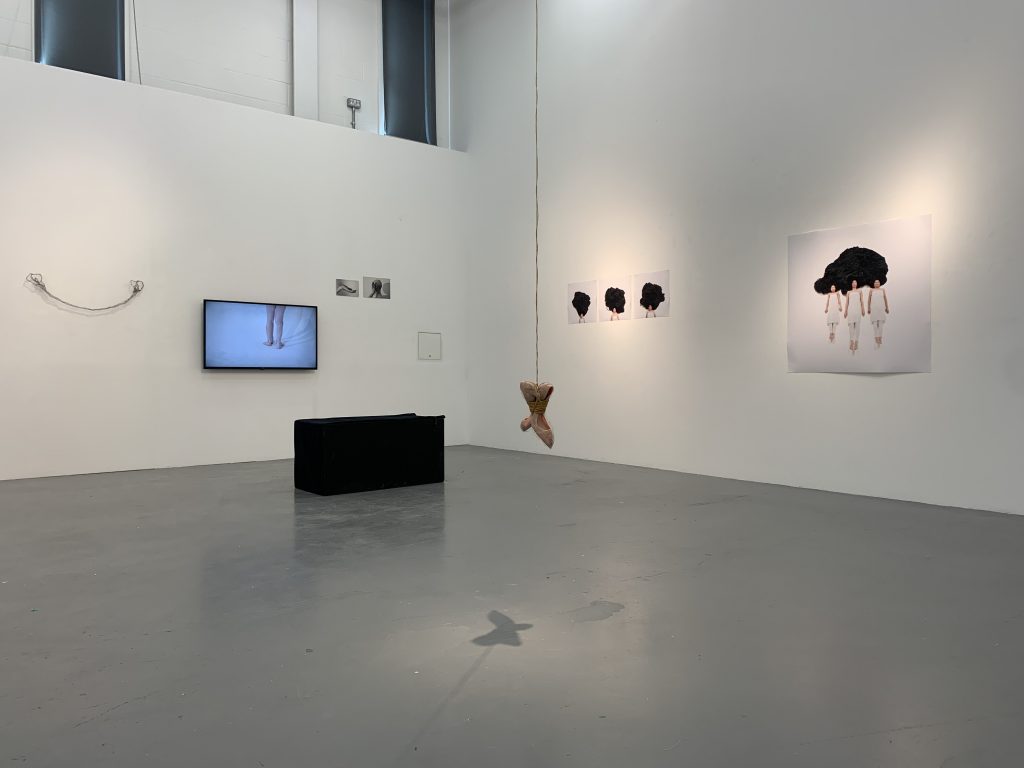
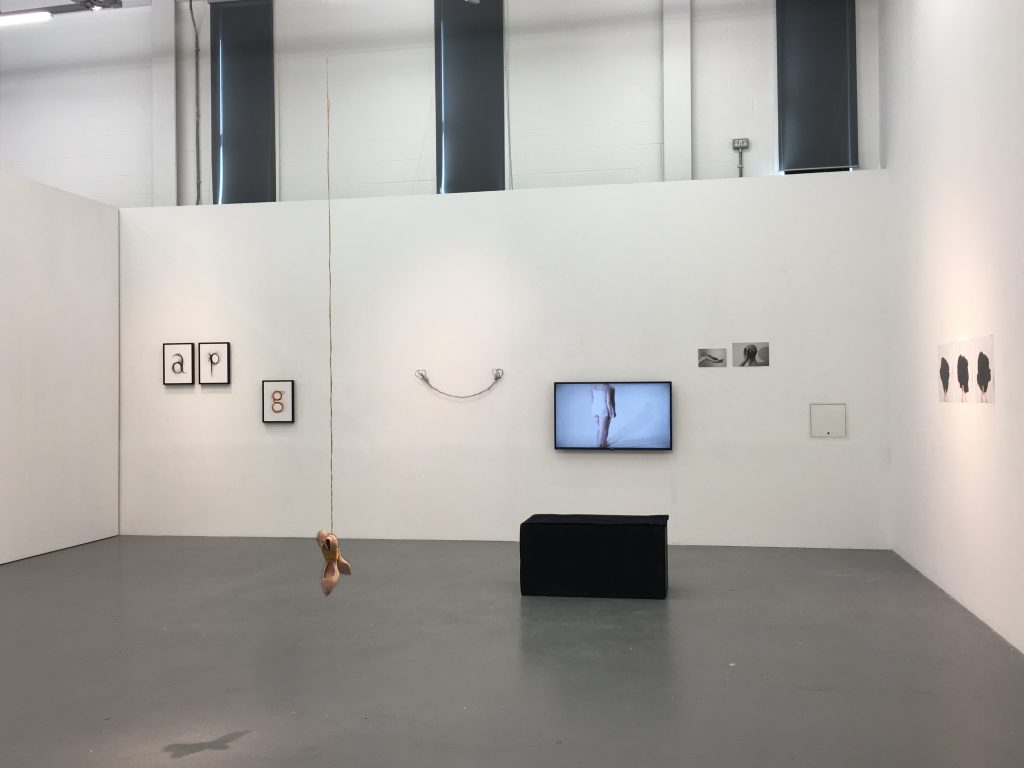
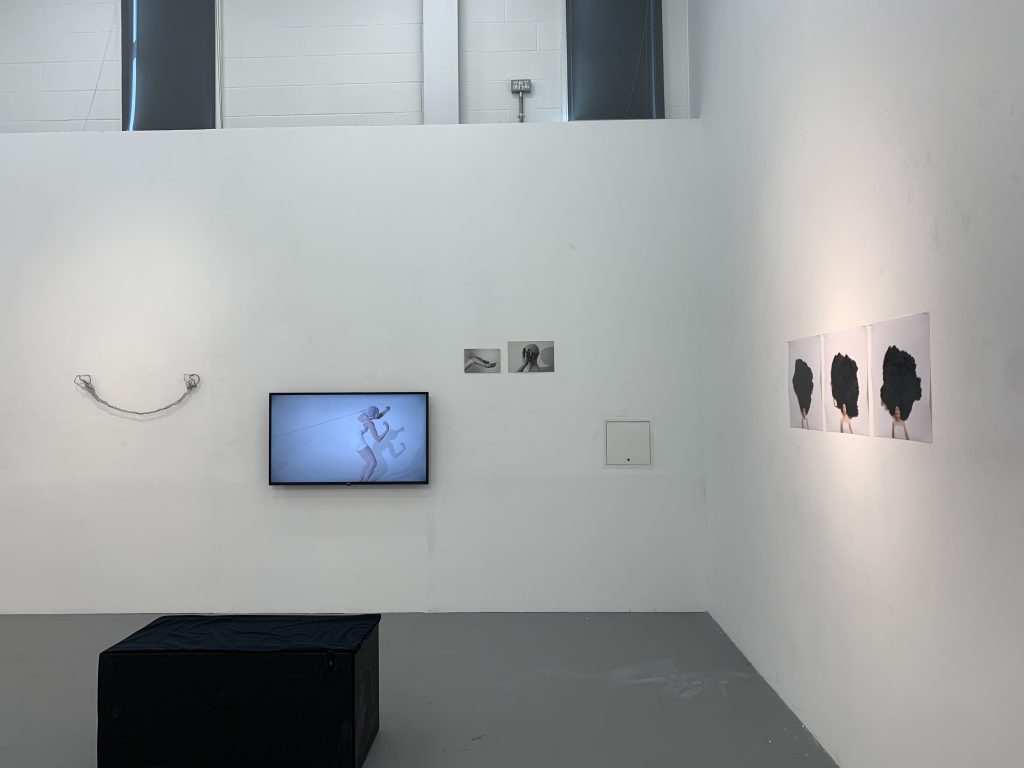
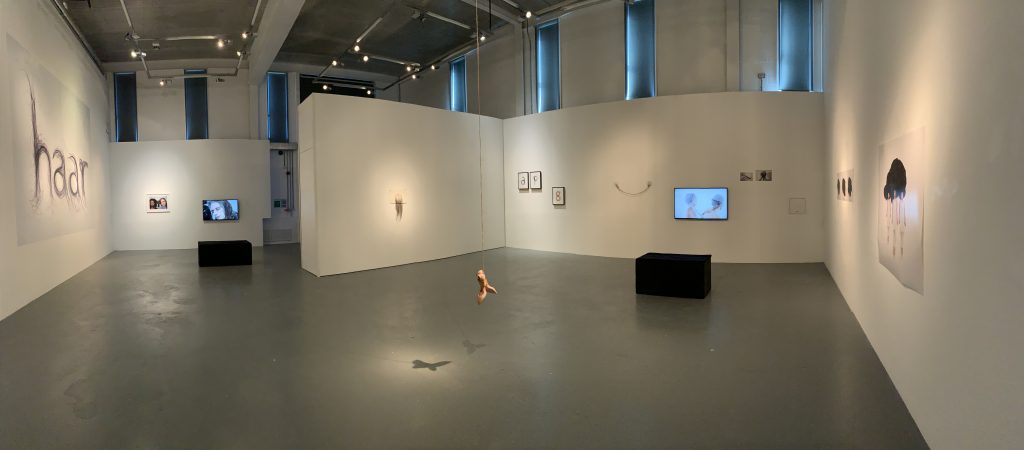
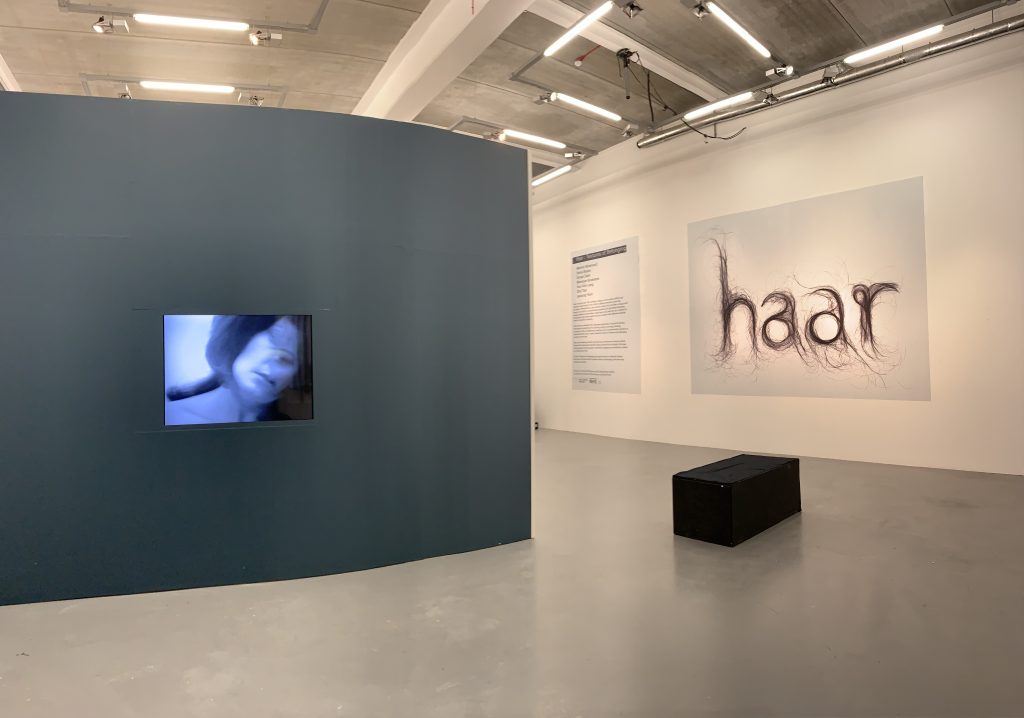
27 sep – 12 nov
Mon – Fri: 10am – 5pm
Leading Light brings together recent works by international artists and photographers. The exhibition presents experimental ways of image-making and examines the exploitation and manipulation of the photographic process.
Artists:
David Claerbout
Elias Heuninck
Junko Theresa Mikuriya
Chloe Sells
Eva Stenram
Maarten Vanvolsem
Corinne Vionnet
Curator: Dr Eleen M Deprez
Supported by: Creative Campus and the School of Arts
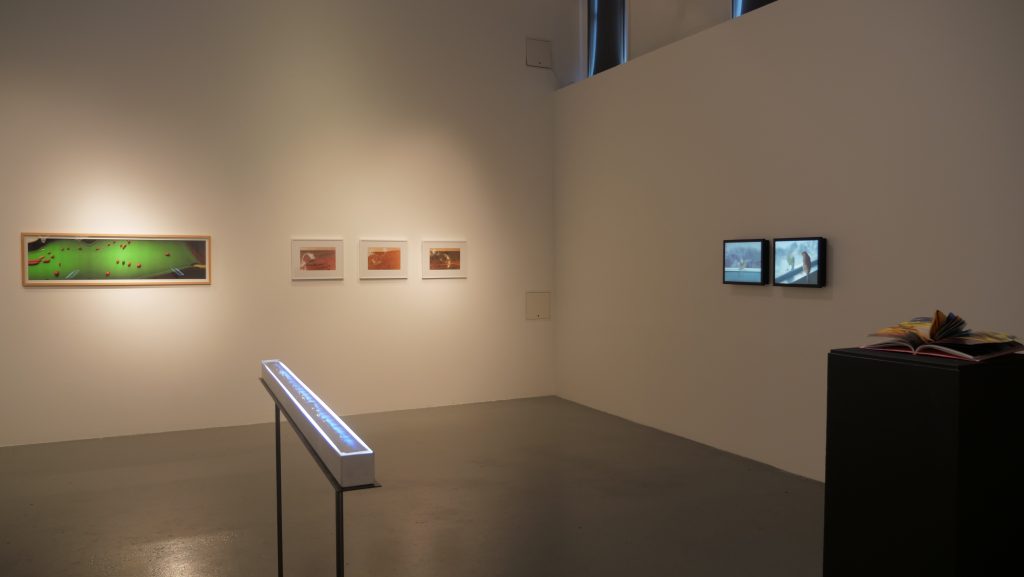
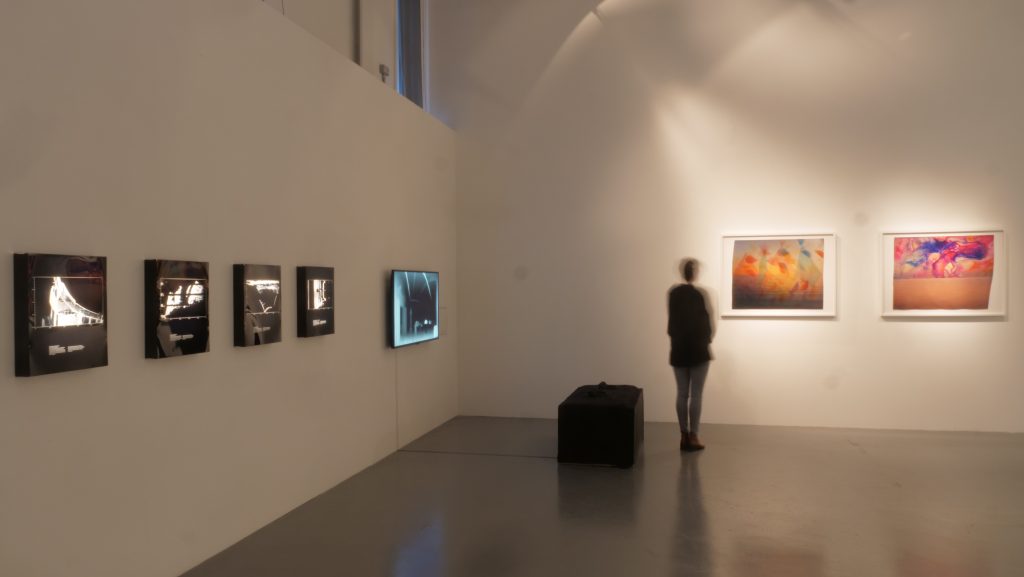

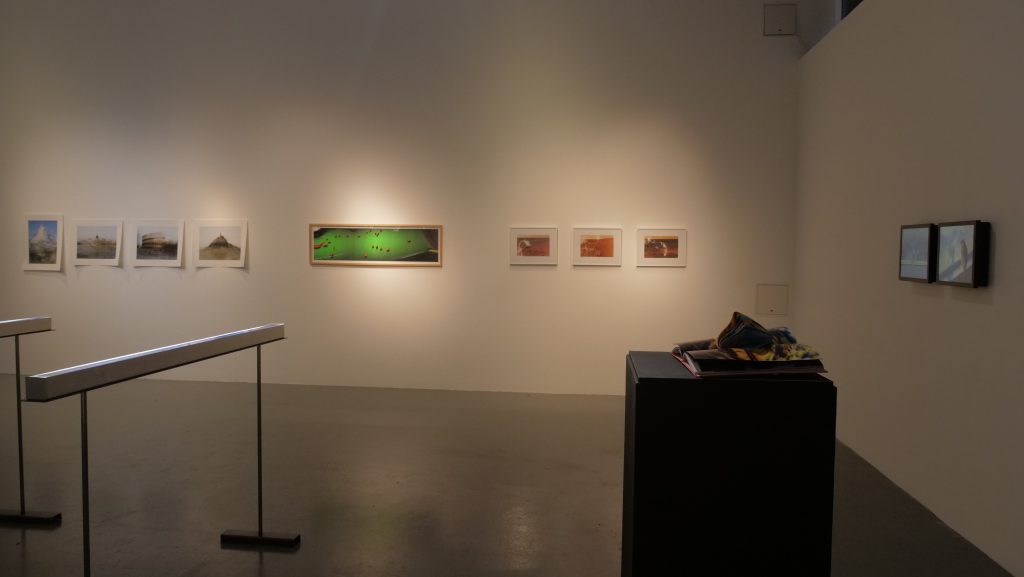
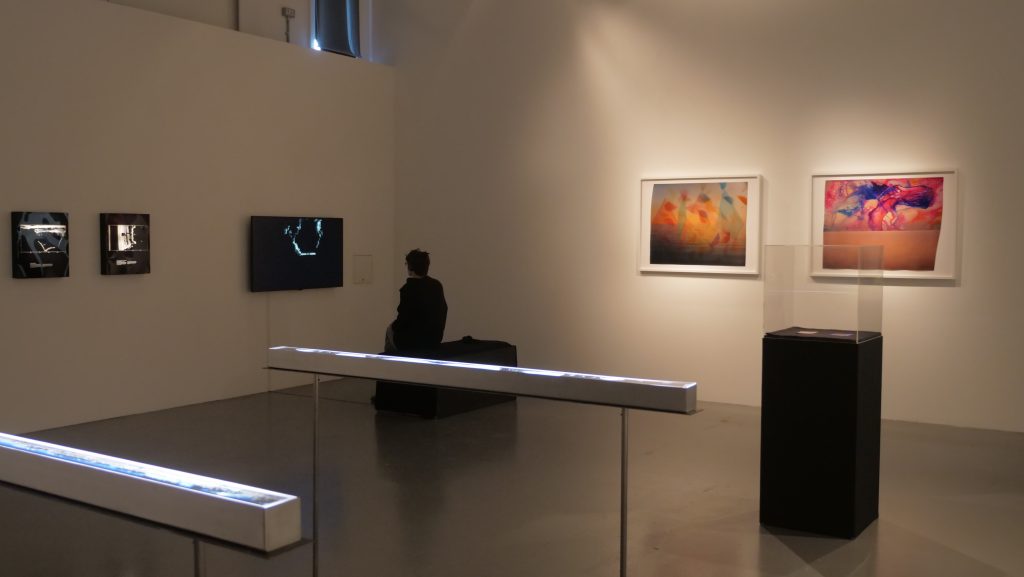
George Eksts: Casual Cursive
12 August 2015 – 3 October 2015 (Admission free)
Sidney Cooper Gallery, Canterbury
George Eksts (b.1978) is a British artist who lives and works in London. He works across a range of media from: drawing, printmaking, photography, installation, video, painting and sculpture exploring ideas and connections between progress, completion and the temporary passing of time.[1]
Having completed a BA in Photography at Falmouth College of Art, Eksts went on to the Royal College of Art, London, to study an MA in Printmaking. When he is not busy creating new artworks, Eksts works for the V & A, London as a photographer documenting the archives.[2]
Influences from Francis Alys (b. 1959, Belgium) can be seen in Eksts’ preoccupation with the flâneur’s element of chance from observing society, and the cyclical repetition in his video installations. Similarly, the wit in Eksts’ video loops can be seen to have inspirations from Marcel Broodthaers’ (1924-1976, Belgian poet and film maker) humorous approach to creating art works, as in Falsework, 2012 which documents scaffolders at work. Like Mike Kelley (1954-2012, American artist), Eksts is also drawn to working with found objects such as road signs he discovered taped up in the City of London for Don’t Stop 1 & 2, 2012 and the flagpoles he acquired from outside a town hall in Manchester in Three State Solution, 2012.
Reflecting on his work Eksts explains: ‘I’ve always been fascinated by placeholders, variables, lacunae, support structures, anything that is not an end in itself but suggests interchangeable and unknown possibilities. The grey silk of Three State Solution seems to absorb colour and light from its surroundings.’[3]
Casual Cursive is a selection of pre-existing works such as Three State Solution, 2012 and the 5 channel video installation, Roman Holiday, 2012. Sitting comfortably alongside these earlier works are four new works such as mixed media diptych, Wandering by Night, 2015 and the 3 channel video installation, Well, 2015, commissioned for exhibition during a month’s studio residency. Eksts’ new works link to previous works through their structures even though they look quite different on the surface. For example, the text paintings seen in Wandering by Night, 2015 are of palindromes which read the same forwards and backwards, like some of the videos which loop by going forwards and backwards in time, back to the beginning point.
Speaking about his studio residency Eksts reveals his intentions, ‘I wanted to make temporary work (mostly directly on the wall) and document the process through photography, which would then hopefully feed into other forms, like animation. I tried to work quite quickly and not be too precious about the results. By photographing every stage, I’m able to make decisions later through an editing process.’[4]
To make the wall drawings, Eksts connected a projector to a drawing tablet. He then drew/wrote while looking at the wall where it was being projected, in order to get an idea of how the architecture of the studio interacted with the drawing. The drawing part is very gestural with a quick and loose hand movement, to produce a dynamic and unpredictable line. He repeated this process over and over again, deleting it until he was happy with the form. Then, he carefully traced a pencil line around the projection, turned off the projector and painted inside the outline. This process was utilised for the panel drawing, Wandering by Night, 2015.[5]
The title refers to cursive handwriting where not all of the letters are joined up. Eksts sees his practice as a language, where each of the individual pieces is like a letter which can be joined together in varying sequences to produce meaning. In this sense, Casual Cursive is about making those connections between the pieces of work, and sometimes breaking the connections too. In many ways, it’s the connections and sequences that are as important as the individual works themselves.
Upon entering the gallery, these connections and breaks can best be seen in Wandering by Night, 2015. This mixed media piece was created through experimentation by creating a large cursive palindrome in paint. This was then transferred onto wooden sections that were broken up and moved around to create the blue-edged diptych. On closer inspection, light pencil lines can be seen breaking the cursive flow of the paint. This is followed by one of his previous works, ink jet prints, Don’t Stop, 2012 (inkjet prints). The contrast with Duchampian found objects (road signs) followed by newly produced mixed media is a good balance.
A hexagonal wooden structure situated in the centre of the gallery screens five video loops of Roman Holiday, 2012. Here, viewers can stand and become mesmerized by the repetitive looping present in each non-narrative video whilst searching for the similar time structures within each one.
Sidney Cooper Gallery’s curator, Hazel Stone, describes Eksts’ work: ‘There is a wonderful sense of play in George’s work. The fluidity and fabric of the everyday re-presented, edited, looped or reversed into a new state of being. The gallery has been delighted to host George as artist in residence and to be able to showcase new works produced during the residency to the public. The mix of existing and new works gives the viewer insight into the interplay between concept and fabrication and the constant drive to create works which side step preconceived endpoints whilst maintaining the ongoing possibility for revision, refabrication and endless outputs.’[6]
This show sheds light on the creative thought processes that Eksts has followed to produce the variety of artworks on display. Seemingly simplistic, yet deeply thought-provoking his work will provoke visitors to search for how these works are linked, possibly deciding to look for different perspectives and connections of the everyday.
Frances Chiverton, Curating MA Student
[1] www.tintypegallery.com/artists/george-eksts – accessed 11 August 2015
[2] 1st interview with artist George Eksts 15 July 2015.
[3] Correspondence with Sarah Grant for Ornament prints and Contemporary Art, V & A blog, London 12 March 2012
[4] 2nd interview with artist George Eksts, 12 August 2015
[5] 2nd interview with artist George Eksts, 12 August 2015
[6] Interview with Sidney Cooper Gallery curator, Hazel Stone, 11 August 2015
After a fantastic opening night, we are thrilled to announce our season of events for Beautifully Obscene.
All events are free and will be held in Studio 3 Gallery. As space is limited, we would ask that you book tickets to ensure your place.
Please note, this exhibition contains very graphic of a sexual nature and may not be suitable for all audiences.
#EarBox: Operatic Arias
#EarBox, Studio 3’s collaboration with the Music Department, returns for a third time. In this instalment the University Music Scholars will take the audience on a journey through the tempestuous world of love and lust at the opera including arias by Mozart, Gluck, Dvorack and Saint-Saens.
May 27th, 13:10 PM
https://www.eventbrite.co.uk/e/earbox-operatic-arias-tickets-17042001084
Student-led Exhibition Tours
Beautifully Obscene has been curated by students from our History of Art department. Join us for a tour and hear them discuss both key works in the exhibition, and their experiences of curating this show.
May 27th, 14:00-15:00
https://www.eventbrite.co.uk/e/beautifully-obscene-exhibition-tour-tickets-17041785439
June 3rd, 15:00 – 16:00
https://www.eventbrite.co.uk/e/beautifully-obscene-exhibition-tour-tickets-17041798478
Beautifully Obscene: Lectures
“Beautifully Obscene: Shunga in Focus”
Louise Boyd, PhD Candidate, University of Glasgow
Do you want to know more about the artists who created shunga and how it relates to the rest of their work? Or do you wonder who bought shunga and why? Come along to learn more about the beauty and humour of the prints on display, and hear about how shunga was created, cherished, and occasionally censored in Edo Japan. There will also be the opportunity for questions.
June 5th, 13:00 – 14:00
https://www.eventbrite.co.uk/e/beautifully-obscene-shunga-in-focus-tickets-17066893538
“Beautifully Obscene: Uses of the Erotic and Pornographic in Feminist Film”
Sara Janssen, PhD Candidate, University of Kent
Taking the paradoxical conjunction of “beautifully obscene” as a starting point, this talk will discuss the troubled relationship between feminism, erotic art, and pornography. I will discuss some of the issues feminists have raised against the representation of the female body and female sexuality in erotic art and pornography, as well as arguments that have been brought to the fore in favour of an appropriation of erotic art and pornography in order affirm female sexual agency. Discussing different examples of feminist art film as well as recent examples of alternative pornography, this talk highlights the central role of female sexuality in feminist theory and art from the 1960s to the present day.
June 8th, 15:00 – 16:00
Beautifully Obscene: The History of the Erotic Print
15th May – 12th June, 2015
Private View: 15th of May, 2015, 6 PM – 8 PM
Studio 3 Gallery is pleased to present Beautifully Obscene: The History of the Erotic Print. Featuring over 50 works from across Europe and Japan and spanning the course of 500 years, the exhibition incorporates the different approaches used by artists in order to explore themes of sexuality, gender roles and power.
The show explores Sir Kenneth Clark’s famous distinction between the socially-acceptable ‘nude’, and the socially-pejorative ‘naked’ body, with the majority of the works included arguably belonging to the latter category. Beautifully Obscene will not only present viewers with a comprehensive study of the aesthetics of the human form and sexuality, but will also challenge our deeply ingrained discomfort with erotic visual representations, and suggest that beauty can in fact be found in the obscene.
Prints have historically been affordable ways to rapidly and economically reproduce and disseminate images, and this has created a rich legacy of erotic art. As well as showing how these themes have evolved across centuries and continents, this exhibition will also document how the viewers’ relationship to the image has shifted over time. Many of the older examples in the show come from books or pamphlets where they could be viewed intimately and privately. More recent and contemporary works were intended to be shown in a gallery setting, so expand the scale of the body, confronting the viewer directly.
The featured artists have represented motifs such as the classical nude of Western Antiquity, modern French eroticism, through to the 30 explicit prints of 18th and 19th century Japanese Shunga, and contemporary meditations on the human form and sexuality. This exhibition explores what we reveal and what we conceal, and the hidden educational and religious connotations that the erotic can harbor. It questions societal fears of the explicit and the pornographic, tackling themes of sexuality, gender and the role of the erotic in a diverse range of cultures and eras.
The exhibition will include works from Pietro Aquila, Pietro Santi Bartoli, Monika Beisner, Jan de Bisschop, Emma Bradford, Simone Cantarini, Stephen Chambers, Marianne Clouzot, Gabriel Dauchot, Angele Delasalle, Roland Delcol ,Amandine Dore, Tracey Emin, Brad Faine, Henri Fantin-Latour, Valentin Le Fevre, Ian Hamilton Finlay, Othon Friesz, Frans de Geetre, Paul Guiramand, Sarah Hardacre, William Hogarth, Katsushika Hokusai, Anita Klein, Rudolf Koch, Antonio Lafrery, Martin Van Maele , Albert Marquet, Henri Matisse, Patricia Nik-Dad, Pablo Picasso, André Provot, Felicien Rops, Berthommé de Saint-André, Kitagawa Utamaro, Alex Varenne, Marcel Vertes , Denis Volx, Lucas Vorsterman, and Shane Wheatcroft.
This exhibition has been organised by students from the Print Collecting and Curating Module at the University of Kent’s School of Arts. This course gives students the opportunity both to curate a museum-quality exhibition of their design and to acquire prints for the Kent Print Collection. In thinking about this exhibition, this year’s students wished to address the lack of erotic art in the permanent collection and to explore the rich and varied history of sensuality and eroticism depicted in print.
For more information and updates, follow our Facebook event page.
Studio 3 Gallery is delighted to announce that artists Brian Rice and Richard Rome will be in conversation with the curator, writer and expert on British art, Ian Massey on 26 February. This is a great opportunity for lovers of 1960s art to hear more about the art on display in our current exhibition Palindrome: The Sixties Art of Brian Rice and Richard Rome.
Refreshments will be available from 17:30, and the talk will begin at 18:00.
Tickets are free, but booking is recommended due to the limited capacity of the gallery. Please book your place here: https://eventbrite.co.uk/event/15651255326/
We are very excited to be launching #EarBox, a new collaboration between the School of Arts’ Studio 3 Gallery and the Music Department.
#EarBox is a series of events exploring the meeting-point between visual art and music, where visitors can experience the latest Studio 3 exhibition, or listen to the unfolding musical performance – or wander the new emotional landscape mapped by the intersection of art and music, where the experience of one medium informs and influences a response to the other.
For our first event, visit Palindrome, our new exhibition of the 1960’s paintings of Brian Rice and sculptures of Richard Rome while Daniel Harding, Deputy Director of Music, performs piano works by Philip Glass, Erik Satie, John Cage and Amy Beach.
Event Details:
Wednesday January 28th, 13:00
Studio 3 Gallery, Jarman Building, University of Kent, Canterbury, CT2 7UG
Admission to all these events is free; make sure you’re following @Unikent_music or @Studio3Gallery for event details, or visit the Music department’s What’s On or the Studio 3 blog page from early January to find out what’s coming.
You are warmly invited to join us on Wednesday November 26th for a conversation between Rose Hilton and curator Dr Ben Thomas.
The pair will discuss our current exhibition that features 26 of Hilton’s lyrical, sensitive and joyful canvases including recent landscapes, still-lifes, interiors and nudes, as well as key works from earlier in the artist’s career, such as the poignant Roger’s Room (1973) depicting her late husband, the artist Roger Hilton.
Refreshments will be available from 17:30, and the talk will begin at 18:00.
Tickets are free, but booking is recommended due to the limited capacity of the gallery. Please book your place here:http://ow.ly/Dds7b
Studio 3 Gallery at the University of Kent is pleased to present Giving Life to Painting a new major exhibition of works by Rose Hilton. Featuring over twenty-five pieces, these works exemplify Hilton’s sensitive and empathic use of colour and form to capture the intangible sensibilities of her landscape and her models.
Hilton was born in Leigh, near Tonbridge, and grew up there as part of a strict Plymouth Brethren family. She studied art at Beckenham School of Art, and then at the Royal College of Art, where she was part of a brilliant generation of students including Robyn Denny, Richard Smith, David Hockney, Joe Tilson. She married the painter Roger Hilton in 1965 and moved with him to Cornwall, where she has lived ever since, forming part of the well-known St. Ives school. This exhibition marks Hilton’s return to her home county of Kent and will be held in conjunction with a parallel exhibition at Messum’s Gallery in London.
Exhibition dates: September 29 to December 19
Private View: Saturday October 4, 18:00 to 20:00
Open Monday to Friday, 9:00 to 17:00
Image: Rose Hilton, Blue Café, 2007, oil on canvas, courtesy of Messum’s Gallery http://www.messums.com/